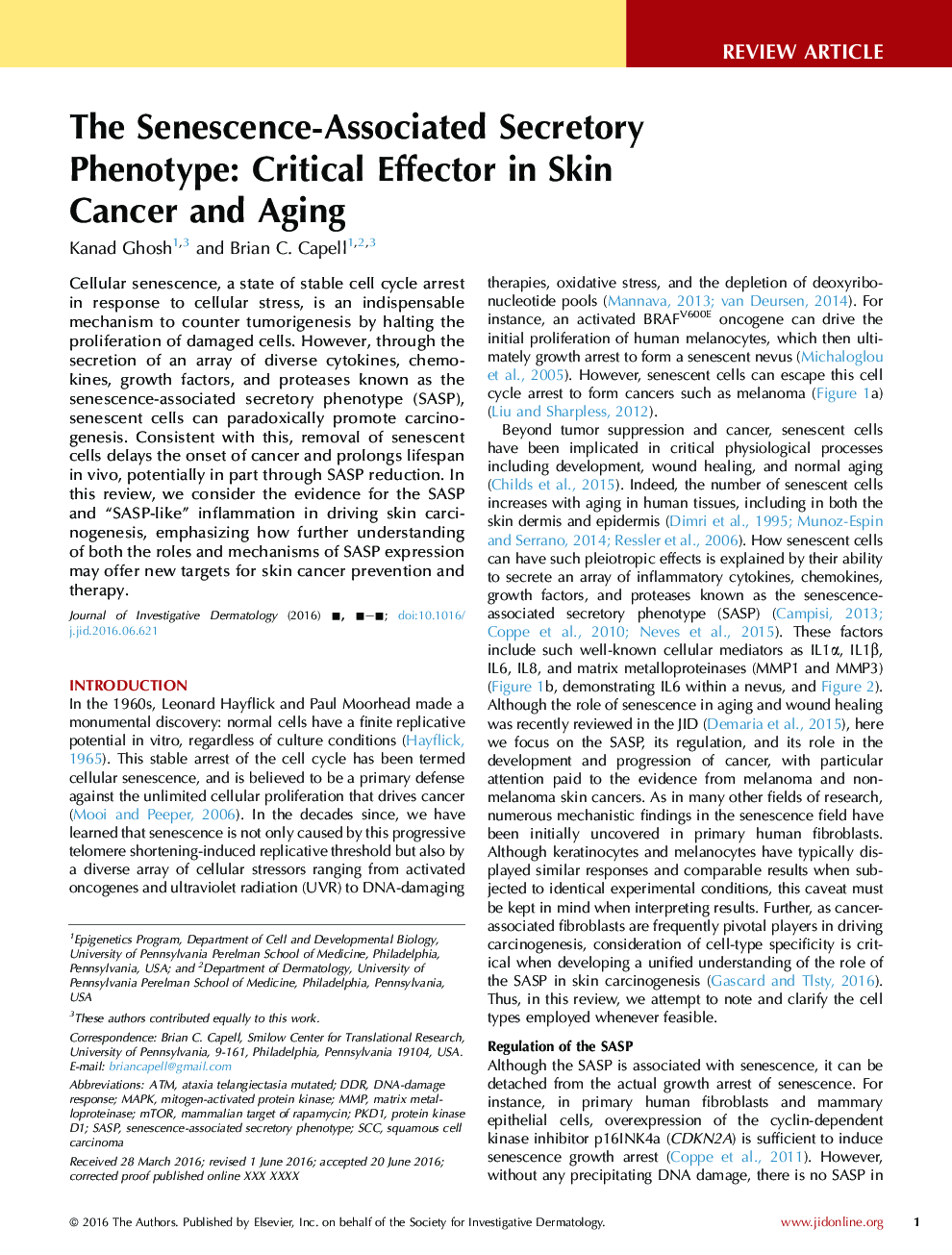| Article ID | Journal | Published Year | Pages | File Type |
|---|---|---|---|---|
| 5649690 | Journal of Investigative Dermatology | 2016 | 7 Pages |
Abstract
Cellular senescence, a state of stable cell cycle arrest in response to cellular stress, is an indispensable mechanism to counter tumorigenesis by halting the proliferation of damaged cells. However, through the secretion of an array of diverse cytokines, chemokines, growth factors, and proteases known as the senescence-associated secretory phenotype (SASP), senescent cells can paradoxically promote carcinogenesis. Consistent with this, removal of senescent cells delays the onset of cancer and prolongs lifespan in vivo, potentially in part through SASP reduction. In this review, we consider the evidence for the SASP and “SASP-like” inflammation in driving skin carcinogenesis, emphasizing how further understanding of both the roles and mechanisms of SASP expression may offer new targets for skin cancer prevention and therapy.
Keywords
Related Topics
Health Sciences
Medicine and Dentistry
Dermatology
Authors
Kanad Ghosh, Brian C. Capell,
